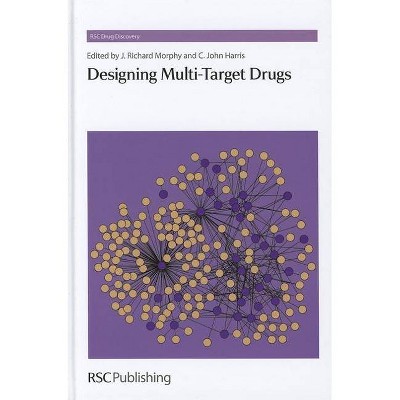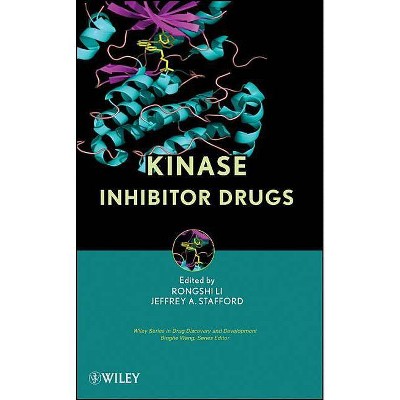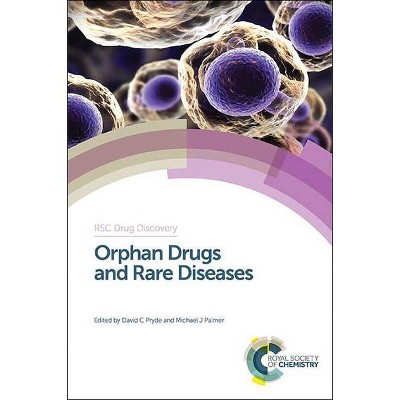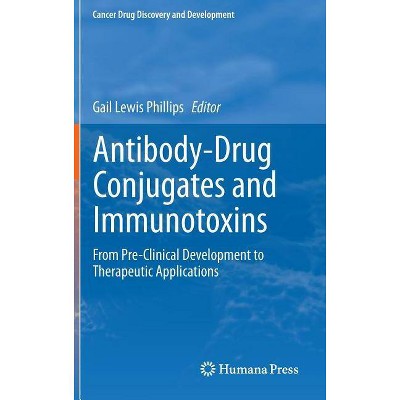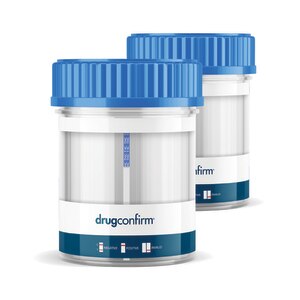Venoms to Drugs - (Drug Discovery) by Glenn F King (Hardcover)
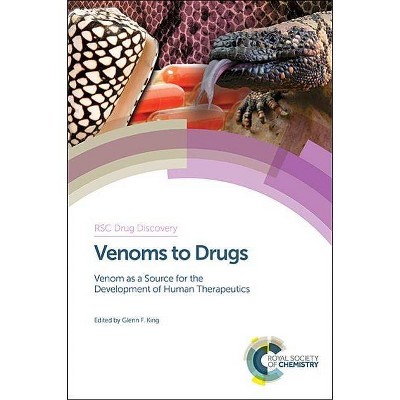
Similar Products
Products of same category from the store
Product info
<p/><br></br><p><b> About the Book </b></p></br></br>An exciting volume that provides a comprehensive and up-to-date review on the potential of peptides and proteins from animal venoms as human therapeutics.<p/><br></br><p><b> From the Back Cover </b></p></br></br>The pharmaceutical industry has become increasingly interested in biologics from animal venoms as a potential source for therapeutic agents in recent years, with a particularly emphasis on peptides. To date six drugs derived from venom peptides or proteins have been approved by the FDA, with nine further agents currently being investigated in clinical trials. In addition to these drugs in approved or advanced stages of development, many more peptides and proteins are being studied in varying stages of preclinical development. This unique book provides an up to date and comprehensive account of the potential of peptides and proteins from animal venoms as possible therapeutics. Topics covered include chemistry and structural biology of animal venoms, proteomic and transcriptomic approaches to drug discovery, bioassays, high-throughput screens and target identification, and reptile, scorpion, spider and cone snail venoms as a platform for drug development. Case studies are used to illustrate methods and successes and highlight issues surrounding administration and other important lessons that have been learnt from the development of approved therapeutics based on venoms. The first text to focus on this fascinating area and bridging an important gap, this book provides the reader with essential and current knowledge on this fast-developing area. Venoms to Drugs will find wide readership with researchers working in academia and industry working in all medicinal and pharmaceutical areas.<p/><br></br><p><b> Review Quotes </b></p></br></br><br><p>Belonging to the RSC's Drug Discovery series, Venoms to Drugs is a welcome addition to the bookshelf designed to guide the reader through the opportunities and challenges to be found in Nature's treasure chest in the efforts to develop new therapeutic solutions to human maladies. Venoms have evolved to assist numerous animals with matters of defence or in catching prey--if you've been stung by a bee you'll have felt the power of a venom at work--and here we explore a little-tapped natural resource which could help provide the chemical foundations for the next big painkiller, antihypertensive or anti-inflammatory. Turning venom, consisting of a cocktail of toxins, from a potentially deadly secretion into a relatively safe, efficacious medicine is not simple. This book does not shy away from this fact, but embraces the problems and examines methods afforded by recent scientific advances through which the many challenges may be overcome. The book begins by introducing the drug-development opportunities provided by these natural resources, with an overview of the evolution of venoms across species and how many venom toxins retain a similar basic template upon which to pin their more specific functional flourishes for various targets and effects. We are given a detailed introduction to the obstacles met when turning these natural products into medicines, from the problems of retaining functionality to producing stable formulations. What stands out here in particular is that there are groups of animals whose venoms remain completely unexplored in terms of their therapeutic potential, and thus the scene is set for the rest of the book. The structure of the book is logical and the contents detailed, well-written and informative throughout. Chapters on approaches to drug discovery, taking into account advantages provided by recent technological advances, are followed by an examination of venoms as lead compounds from various animal orders in four further chapters. Later on, Chapters 9 and 10 describe the development of analgesic drugs and anti-inflammatory/autoimmune compounds from some extraordinary sea creatures, demonstrating good examples of the possibilities that may be found. The technical detail in the writing has not been lost or brushed over, which makes the book all-the-better as a useful resource. One aspect that is particularly good is the inclusion of case studies, to demonstrate how a carefully nurtured project can bear fruit. As always, there are chemical puzzles to solve, pharmacological mechanisms to pick apart and regulatory hurdles to jump, but from deadly cone-snail venom used to paralyse its prey comes the analgesic ziconatide, and from pit viper venom comes the ACE inhibitor captopril--one wonders what next might be found from a jellyfish's tentacles or a spider's jaws. If there is a sting in the tail in this particular story, then it is certainly to be extracted, analysed and put to good use! This book is, of course, targeted towards chemists as is clear from the detail and style throughout, but others with an interest in this subject (pharmacologists, electrophysiologists, formulation scientists and their kin) will certainly find this a useful, interesting and perhaps even thought-provoking resource to have at hand.</p>--Neil C. Henny, Liverpool John Moores University "Chromatographia (2015) 78:1507-1508 "<br><p/><br></br><p><b> About the Author </b></p></br></br><p>Professor Glenn King has been working on animal venoms since 1996.He has extensive experience in the discovery, production, and structural and functional characterization of venom proteins, and is intimately aware of the issues surrounding their development as drugs and insecticides. In 2006, Professor King founded an agricultural biotechnology company, Vestaron Corporation, that is developing spider-venom peptides discovered in the lab as bioinsecticides.His current research is largely focussed on the development of venom peptides as analgesics for the treatment of chronic pain.</p>
Price History
Price Archive shows prices from various stores, lets you see history and find the cheapest. There is no actual sale on the website. For all support, inquiry and suggestion messagescommunication@pricearchive.us
